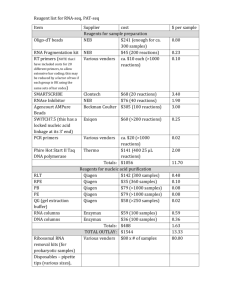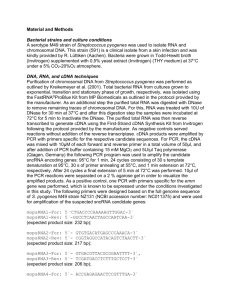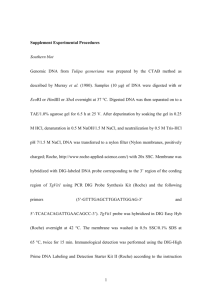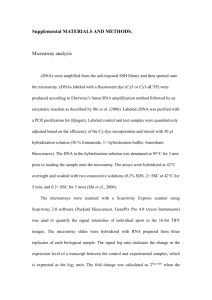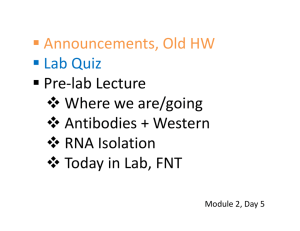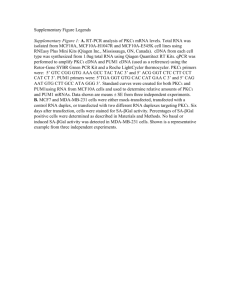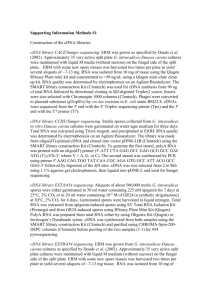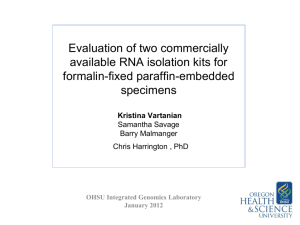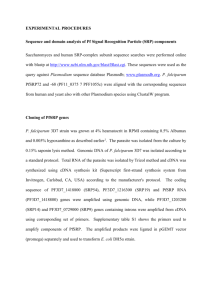RNA isolation and analysis of gene expression
advertisement
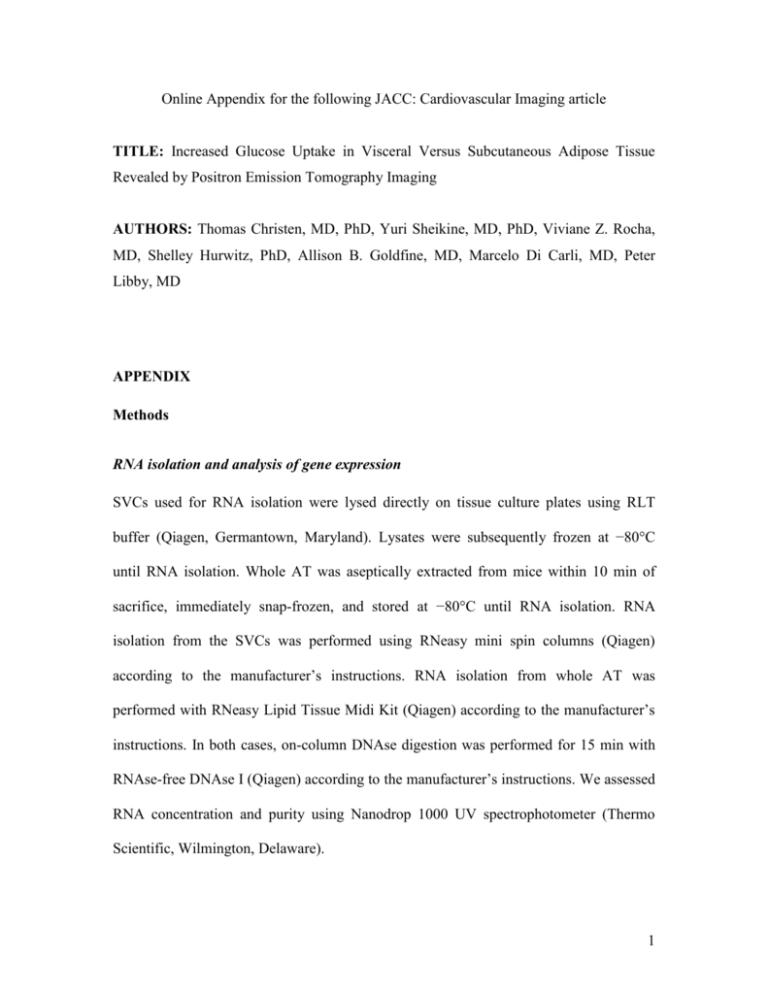
Online Appendix for the following JACC: Cardiovascular Imaging article TITLE: Increased Glucose Uptake in Visceral Versus Subcutaneous Adipose Tissue Revealed by Positron Emission Tomography Imaging AUTHORS: Thomas Christen, MD, PhD, Yuri Sheikine, MD, PhD, Viviane Z. Rocha, MD, Shelley Hurwitz, PhD, Allison B. Goldfine, MD, Marcelo Di Carli, MD, Peter Libby, MD APPENDIX Methods RNA isolation and analysis of gene expression SVCs used for RNA isolation were lysed directly on tissue culture plates using RLT buffer (Qiagen, Germantown, Maryland). Lysates were subsequently frozen at −80°C until RNA isolation. Whole AT was aseptically extracted from mice within 10 min of sacrifice, immediately snap-frozen, and stored at −80°C until RNA isolation. RNA isolation from the SVCs was performed using RNeasy mini spin columns (Qiagen) according to the manufacturer’s instructions. RNA isolation from whole AT was performed with RNeasy Lipid Tissue Midi Kit (Qiagen) according to the manufacturer’s instructions. In both cases, on-column DNAse digestion was performed for 15 min with RNAse-free DNAse I (Qiagen) according to the manufacturer’s instructions. We assessed RNA concentration and purity using Nanodrop 1000 UV spectrophotometer (Thermo Scientific, Wilmington, Delaware). 1 Isolated RNA was reverse transcribed into complementary DNA (cDNA) using Superscript II reverse transcriptase (Invitrogen, Carlsbad, California) and oligo-dT primers (Invitrogen) as follows. One microgram of total RNA from each sample was used for cDNA synthesis. RNA and oligo-dT primers were incubated for 3 min at 70°C to allow primer annealing, after which the tubes were supplemented with reaction mixture containing 5× first-strand buffer, 0.1 mol/l DTT, 10 mmol/l dNTPs, RNaseOut, Superscript II, and RNAse-free water (all from Invitrogen) and incubated at 25C for 10 min, 42C for 50 min, and 94C for 4 min. Synthesized cDNA was frozen at −20°C until use. Quantitative polymerase chain reaction (qPCR) was performed on 2 μl of cDNA with the MyiQ Real-Time PCR Detection System (BioRad) and SYBR Green as detection agent. iQ SYBR Green supermix (BioRad) containing iTaq hot-start DNA polymerase was used for qPCR according to the manufacturer’s instructions. Primers were designed using free online Universal ProbeLibrary Assay Design Center from Roche Applied Science (https://www.roche-applied-science.com/sis/rtpcr/upl/adc.jsp). Primer sequences and gene accession numbers are shown in Table 1. To verify specificity, all primers were also BLASTed against mouse genome using the NCBI BLAST Web site. Glyceraldehyde 3-phosphate dehydrogenase (GAPDH) was used as a reference gene. Its expression among samples was stable with the quantification cycle (Cq) 23 to 24. Cycling conditions were 95°C for 3 min, 95°C for 15 sec + 60°C for 1 min 40 times, 95°C for 1 min, 55°C for a min with subsequent gradual increase in temperature to enable melting curve analysis for estimation of primer specificity. 2 Cq values were extracted from amplification curves by automatic analysis in MyiQ software. Relative expression ratios of genes in visceral fat compared to subcutaneous fat were calculated using ΔΔCq method with GAPDH mRNA expression as reference. 3 Online Figure 1 Average intensity of fluorodeoxyglucose (FdG) uptake (expressed as the standard uptake value [SUV]) in subcutaneous adipose tissue (SAT) and visceral adipose tissue (VAT) in all men and women (A), lean men and women (body mass index [BMI] between 21 and 22.7) (B), and obese men and women (BMI between 32.8 and 45.3) (C). The horizontal line in the box plots represents the median value; the boxed area is the interquartile range, and the whiskers denote the 10th and 90th percentiles. 4





